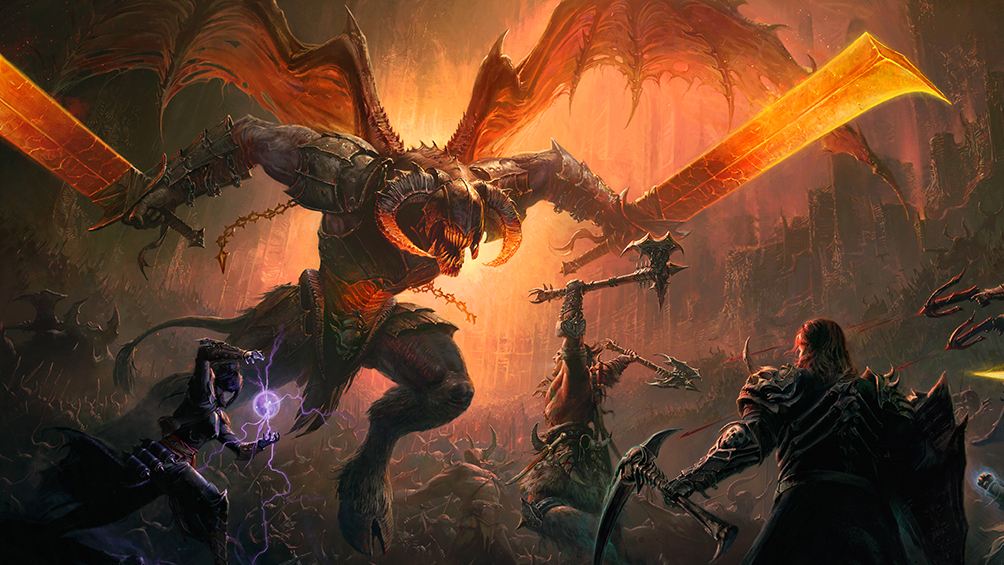Diablo Immortal is more than just Diablo 3 on your phone
Hot grill summer

Few developers would willingly shun the past creations of their studio, but Diablo general manager Rod Fergusson is one of them. He’s itching to draw a line in the sand, and clear up a popular misgiving: Diablo Immortal is not simply Diablo 3 on your phone.
For Fergusson, it’s much more. A fully-fledged MMORPG that will support buckets of social systems at launch and live service content for years to come, it’s a grand expansion of the core Diablo formula. It’s also a change of pace. With a mobile-first design that’s allowed for granular experimentation right the way down to its control scheme, the game’s taking significant deviations from its action RPG stablemates.
But ahead of anything else, Diablo Immortal is pitched as that most unconvincing of video game descriptors: a triple-A mobile game. Blizzard maintains that while the infernal RPG is launching on mobiles – and was only ported to PC as an afterthought – it’ll provide the same substance, scope, and production value as its series predecessors.

Big promises
It’s a bold pledge that's been made by several developers in the past, and has rarely been delivered upon. But Fergusson reckons the industry might finally be in a place to enable Diablo Immortal to go one step beyond its aspiring triple-A mobile competitors and deliver a genuine blockbuster experience.
“People have always had this sort of ambition to bring a console or PC experience to your phone,” Fergusson says. “What you're seeing with the growth of the hardware – just how impressive the resolution of the display is, the power of the CPU, and the graphics chips that are driving mobile devices – now means that you can actually do that.”
I'm seeing the things I would expect to see on my 75-inch TV on my phone
Rod Fergusson
Today, phone memory is powerful enough to load chunks of levels and seamlessly pivot to cutscenes without long periods of buffering, and GPUs are sufficiently advanced to support passably modern, stylized visuals. As principal game designer Joe Grubb highlights, it’s no longer only the bleeding edge of devices that can run demanding games, either. While Diablo Immortal will feature a high-fidelity mode for those with the snazziest phones and tablets, even budget and mid-tier models can run technically intense titles with minimal latency or visual sacrifices.
Add to that the proliferation of mobile-compatible controllers, and playing games on a portable device has never felt closer to playing them in your living room. Add-ons like the Razer Kishi – a split gamepad that slots alongside the edges of your screen – let you turn your phone into something like a portable games console. Even the PS5’s DuelSense and Xbox Series X controller can connect to phones over Bluetooth. When it’s possible to grab a gamepad, connect to your phone, and stream Halo Infinite through Xbox Cloud Gaming, it’s difficult to argue that the mobile phone hasn’t made huge strides towards becoming a genuine gaming platform.
Sign up for breaking news, reviews, opinion, top tech deals, and more.
“I don't like the triple-A budget conversation – like it's a triple-A game because you spent this much versus this much,” Fergusson says. “I like to think about it as a feeling, and it was very quick that I got sucked into this mobile experience and went, ‘Oh, this feels like a triple-A experience’. I'm seeing the things I would expect to see on my 75-inch TV on my phone, so it feels rich and authentic.”
Infinity and beyond

Whether Diablo Immortal actually reaches the audience that Blizzard has in mind is almost a moot point. It’s already demonstrated the leaps that wannabe triple-A RPG mobile games have made since they first started appearing a decade ago. Infinity Blade was one such early contender, claiming to deliver blockbuster action for hardcore gamers on a phone screen way back in 2010. It was the first iPhone game to be built using Unreal Engine 3, boasted appropriately high-octane graphics for the time, and had you fight a series of bosses across a high fantasy world.
Except it was something of a cop-out. Fergusson, who briefly contributed to the game in a production role, says it was “very simplistic” insofar as you would “click to move to a boss fight, swipe in the boss fight, and then click move to the [next] boss”. It amounted to little more than an on-rails sequence of quick-time events – hardly the magnificence that players had come to expect from the biggest games of the day.
What we've seen over the last 10 years is that mobile has flourished into a meaningful platform
Rod Fergusson
Hardware changes have allowed developers to embrace more ambitious design goals since. But games like Candy Crush and Clash of Clans have nonetheless dominated the mobile gaming space for the last decade – entire app platforms tending to cater towards what Fergusson calls “distraction gaming”.
“The way that we used to sell it back then [in the time of Infinity Blade] was: I'm waiting for my coffee at Starbucks, play three minutes; I'm waiting at the [ATM], play three minutes; I'm in the car or in a line, play three minutes.”
In the run-up to Diablo Immortal’s launch, however, playtesters have often spent 45 minutes with the game at a time, returning for multiple play sessions a day. “What we've seen over the last 10 years is that mobile has flourished into a meaningful platform, which for some people is their only expression into this world of gaming – that's the only platform they have to play on,” Fergusson says. “So to bring [Diablo Immortal] to this device, that now is able to give them a triple-A experience on the only platform they have access to, is fundamentally different.”
Pocket computers

For all those leaps forward, don’t expect an avalanche of triple-A mobile games to appear on the horizon. Advances in hardware may have improved the scope of game development, but they haven’t necessarily made it any easier. The bar of ‘blockbuster standard’ is constantly being pushed back.
“Game development gets more advanced as we get more tech,” Grubb says. “It's not like we consume the tech and then we get better at doing the thing. Ambitions rise as tech increases. So it’s definitely going to broaden [mobile games’] creation, but we're always going to be chasing what’s new and what can be done tomorrow that couldn't be done today.”
That said, Fergusson tells me that hardware improvements allowed the team to port Diablo Immortal to PC with little friction. “We were able to make the decision as late as we did because of the power that mobile devices have,” he says. “It wasn't like, ‘Oh, we have to completely redo all the art’, because these are high-resolution, high-powered devices. We were able to bring that to PC relatively quickly.”
PC gamers can thank the advances in mobile technology for letting them play Diablo Immortal at all – whether it truly reaches triple-A quality or otherwise.
Diablo Immortal will release Thursday, June 2, on Android, iOS and PC.

Callum is TechRadar Gaming’s News Writer. You’ll find him whipping up stories about all the latest happenings in the gaming world, as well as penning the odd feature and review. Before coming to TechRadar, he wrote freelance for various sites, including Clash, The Telegraph, and Gamesindustry.biz, and worked as a Staff Writer at Wargamer. Strategy games and RPGs are his bread and butter, but he’ll eat anything that spins a captivating narrative. He also loves tabletop games, and will happily chew your ear off about TTRPGs and board games.